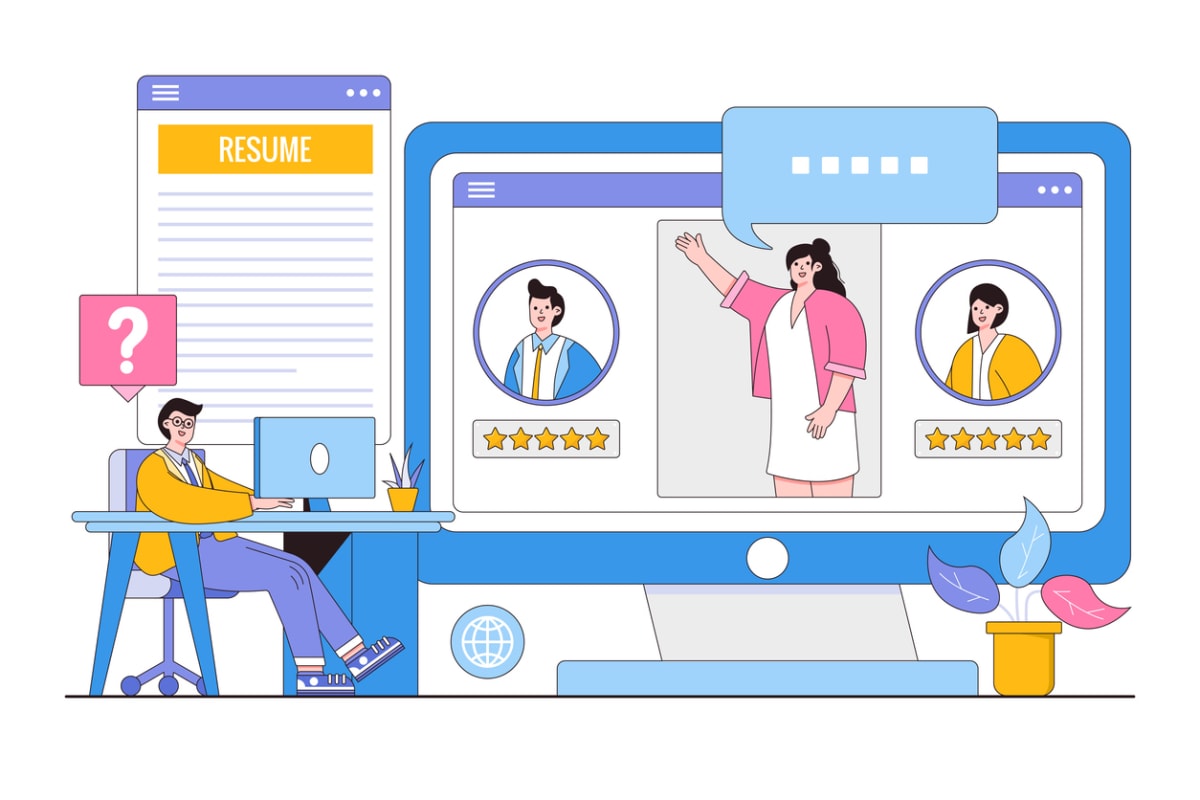The process of interviewing for a job can be time-consuming and difficult. Traditional, real-time interviews create scheduling conflicts, and often interviewees have to rely on getting a kind interviewer to have success. Luckily, asynchronous recruitment offers a fast and reliable solution that benefits both employers and job candidates and streamlines the entire interview process.
What is an Asynchronous Interview?
Interviewing is a pivotal part of the hiring process. It is a time-consuming process, and given the challenges of finding and reaching out to the right talent pool, new innovative ways are required to make the hiring process more effective and successful. This is where asynchronous interview or one-way interview comes into the picture.
Asynchronous recruitment plays an important role in your hiring strategy, simplifying the interview process. It makes use of video for screening candidates. Also known as async, asynchronous video, or one-way interview, this process involves sending the questions to the interviewee, who will then send back their answers to the questions in video format.
This is different from the conventional two-way interview format, where the questions are answered in real-time by the candidate. A unique advantage of one-way interviews is that they allow you to interview a much larger number of candidates in a shorter span of time.
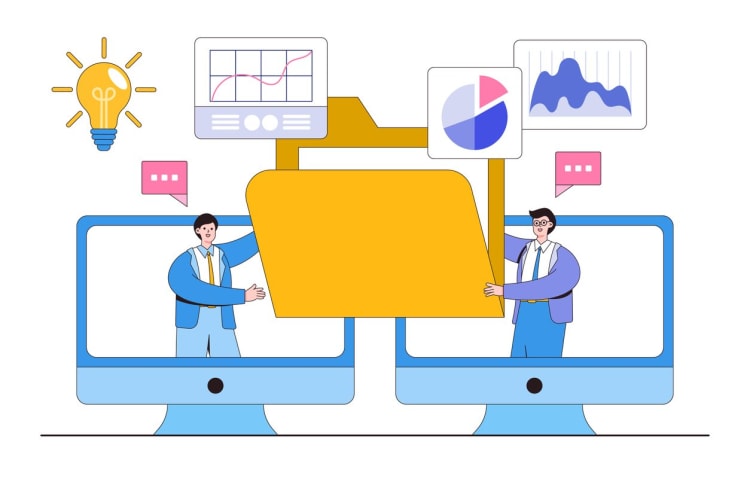
How to Start Asynchronous Recruitment?
To initiate your asynchronous interview, it is recommended to take the following steps:
Find a Software
A simpler way to implement the one-way interview system is to use a software application. HireVue and Willo are some commonly used software options.
Check out free demos or trials of different applications before choosing the right option. Also, some software applications enable a wider range of video interview features. Determine your needs and desired results, then choose the right software for your company’s needs.
Practice Round
Run a practice round. It should give you a good idea of what the actual interview will be like. The practice session should help you record a response. Let the interviewee ask any questions during this round.
Interview Round
Once you are satisfied with the practice round results, you should run the interview round. The candidate will see the question displayed on their screen. Depending on your asynchronous interview format, the candidates can take all the time they need to answer your question or answer the question within a limited time period. Some asynchronous interview formats will allow the interviewee a second try for each question if they’re not confident in their initial recorded response.
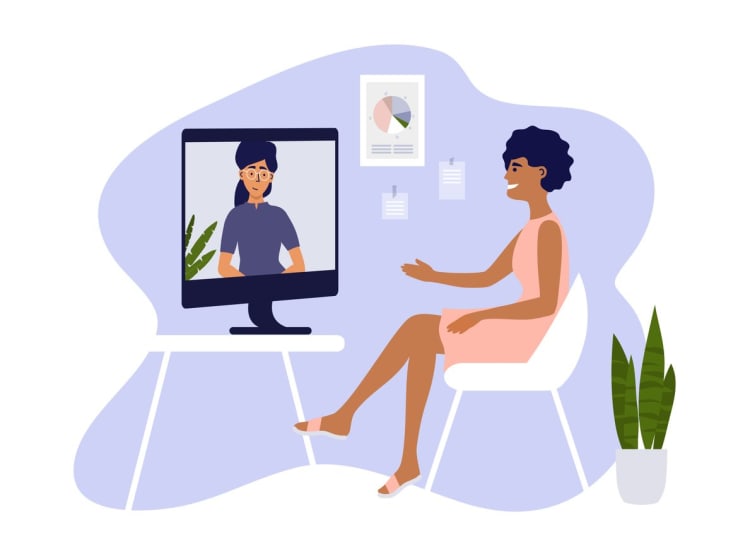
Pros of One-Way Interviews
Some of the positives of using one-way interviews to screen or hire talent are as follows:
Save Time
Once you have your interview questions in place, asynchronous interviewing saves you a lot of time compared to the conventional interview form. You can send the questions to a large number of candidates and wait for the responses. Some software programs feature automatic screening that further help streamline the review process and speed up the hiring process.
Easier to Conduct
The entire process of conducting a one-way interview is easy. You can screen or interview hundreds of candidates by making a simple effort of compiling and sending out the questions. On the other hand, a 10-minute phone call to interview 100 applicants can take you tens of hours to complete and requires company personnel to spend a lot of time running the interviews.
Less Scheduling Issues
Traditionally, employers have been holding phone interviews. The traditional approach has been complicated because of scheduling challenges. With asynchronous interviews, there is no room for availability or scheduling conflicts. Candidates can answer your questions whenever they are free to do so as long as they send in their responses before the set deadline.
Candidate Reach
Traditional talent screening techniques limit the number of candidates reached and evaluated. Not with a one-way interview. You are limited only by the time you can dedicate to prepping and reviewing the interviews. As mentioned above, the activities that take time are:
Compile one-way interview questions
Send out the questions
Assess the responses from the candidates
Faster Process of Elimination
Asynchronous interviewing makes eliminating candidates much simpler. In the traditional interview format, when you realize that the candidate isn't suited for the position during the first few minutes, it can be impolite to stop the interview immediately. An asynchronous interview gives you the freedom to swiftly rule out candidates who don’t meet the stated requirements.
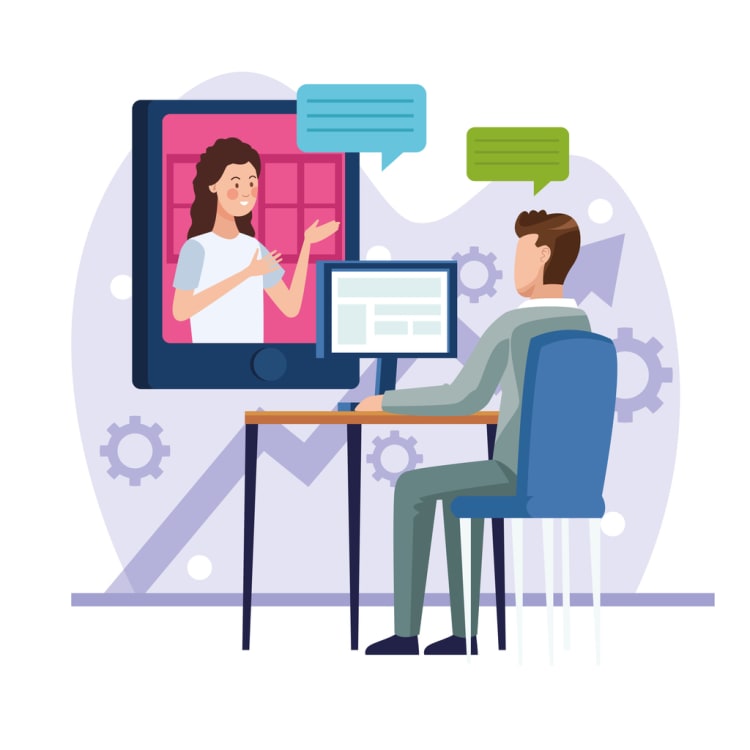
Cons of Asynchronous Interviews
There are some cons to conducting a one-way interview, but luckily there are simple solutions as well.
Less Personal
The interview may seem to be less personal from the perspective of the candidate. They will be talking to a camera, and there is no immediate response. This limitation can be overcome by sending out personalized emails.
No Follow-Up Questions
Another limitation is that there is no room for follow-up questions.
-
Candidates cannot ask a quick follow-up question.
-
The interviewer cannot ask candidates questions to clarify something they said.
This challenge can be addressed by scheduling another interview where such follow-up questions and feedback can be addressed.
May Miss Good Candidates
When you use the automated screening technique offered by a software program, it is likely to miss out on good candidates.
-
This can be compared to the keyword scanning system used for screening resumes.
-
Candidates can have the right skills and experience, but they may not have used the required keywords.
One way to rectify this issue is to have an HR employee briefly look over the results of the asynchronous interviews to see if anything glaringly stands out as mistaken.
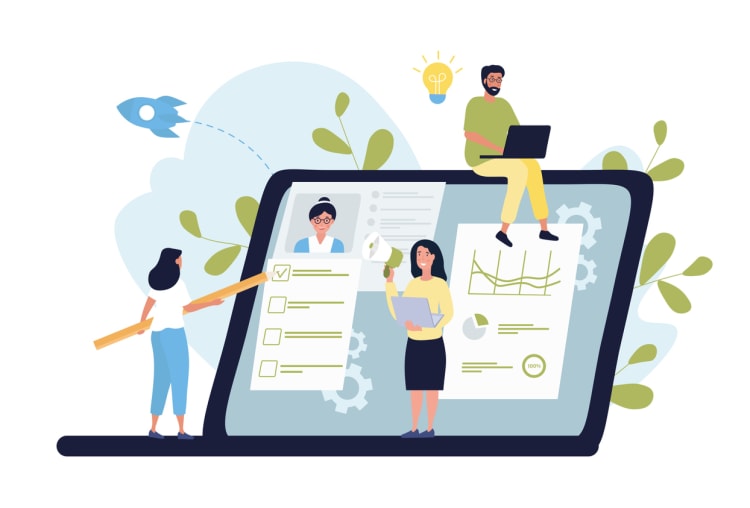
One-Way Interview Tips & Tricks
It is recommended to use the following tips and tricks to enhance the results of the asynchronous recruitment process:
For an Employer
Employers can use the following tips to get more out of their asynchronous interview process:
1. Have A Trusted Software
As mentioned above, you should use a trusted software program to implement asynchronous interviews. It should have all the features you need to complete the asynchronous interviews successfully.
2. Preplan Important Questions
You should preplan all the important questions you will be asking. These questions will vary based on whether you will be using this form of an interview for screening or interviewing and should factor in the following:
-
Whether all the applicants will complete the interview or only those candidates with the right skills based on resumes
-
Whether the format will be used for all types of roles in your company or just for certain positions
3. Have A Good Mix of Skill Questions and Character Questions
The questions should go beyond the resume to help you select the right candidates.
-
Go beyond the general questions such as career goals, strengths, and weaknesses.
-
Ask questions specific to the duties that need to be completed.
-
Ask about soft skills and hard skills.
-
Different sets of questions can be created to fill up different positions.
4. Limit it to 4-5 Questions
It is further recommended to limit the number of questions, ideally, to 4 or 5 questions asked. The questions must also fit this specific interview format. Keep in mind the following points:
-
A candidate will get around a minute to read a question.
-
It can take a candidate two to three minutes to answer a question.
-
The questions must be straightforward and simple.
The objective of asynchronous interviews is not only to find the right candidates for filling up a position but also to simplify the overall process for everyone involved.
5. Leave A Minute or Two for Them to Provide Feedback or Ask Questions at The End
You can overcome one of the challenges of asynchronous recruitment by providing the interviewees time to give feedback or ask questions. This is an important step that can make your interviews more effective.

For An Interviewee
Interviewees are recommended to follow these one-way video interview tips:
1. Make Sure to Take the Practice Round Seriously
You should take the practice round seriously and follow proper video conferencing etiquette as if it were a real interview. This should be the case even when there is no time limit on how long you can take to answer the questions. The practice round should help you plan exactly what you want to say. Take a deep breath, and channel your concentration.
While you want to use the practice round wisely, you should avoid over-preparing your responses. That could make your video interviews sound more static and unnatural.
It is important to display your personality, even when you are following the asynchronous recruitment process. Practice and prepare, but don't overdo it.
2. Get Comfortable in Front of The Camera
A good thing about asynchronous interviews is that they give you your own time to get prepared and ready. Before the interview, you’ll want to wear professional clothes since the top half of your body will be visible on camera.
Also, spend time before the interview getting comfortable in front of the camera so you can get to a place where you look and feel relaxed on-screen. Your body language and facial expressions matter. No one wants to be seen as uncomfortable or uneasy during an interview.
3. Take It Seriously
Initially, it can be difficult to get used to one-way interviews. Since it is an asynchronous form of communication, it can feel unnatural to look at the webcam and speak to someone who is not listening to you in real time. However, it is important that you look at the camera and avoid looking around the room. It is a good idea to set up your interview space so that you have a professional background, good lighting, and minimal distractions.
4. Relax And Give It Your Best Shot
As mentioned above, it is important to feel relaxed when answering your one-way interview questions. You don't want to look nervous, as it will clearly show on the camera. It is important to feel relaxed and try to answer the questions to the best of your ability.
Like a virtual career fair, one-way interviews benefit employers who want to promote their job postings to a large talent pool. Interviewees can feel relaxed and have time to prepare on their own schedule. Once the video interviews are submitted, employers can seamlessly sort through the results and find the best candidates to fill their positions.
FAQs on Asynchronous Recruitment
A one-way interview allows job applicants to record their responses to a list of questions in video format using specific software applications. Once the responses are submitted, the candidates are reviewed for the position.
Both asynchronous and one-way interviews refer to the same format of interviews. A one-way video interview requires candidates to record themselves answering the list of questions sought by a hiring manager. The recording is then sent to the hiring manager for them to view.
There are many benefits of one-way interviews. You can interview more applicants, standardize the process, speed up the hiring process, save costs, and get better insights into the abilities and skills of candidates. This interview format also helps improve the candidate experience.
You can ask the following questions during asynchronous interviews:
- Tell us more about yourself
- What experience do you have to match the position and our company?
- Why do you want to work with our company?
- Where do you see yourself in the next 5 or 10 years?
- How do you handle conflicts and challenges?
- Are you good at working in a team or solo?
